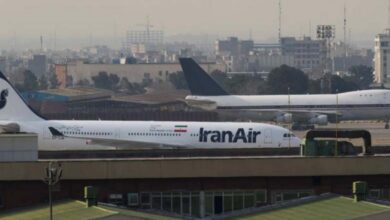What are the implications of transnational terrorism, its boundaries, steps, and models? Experts explain

The world is suffering from the intense proliferation of terrorist groups in countries, aiming to spread their influence and jihadist ideologies, following their significant losses in the Middle East region. This is part of the counter-terrorism strategy, and despite multiple global efforts to target and eliminate these organizations, both ISIS and Al-Qaeda remain among the most active terrorist groups worldwide.
While the primary ISIS organization remains active in Iraq and Syria, sleeper cells continue to carry out approximately 500 low- and medium-scale attacks annually. Due to the relatively moderate nature of these attacks, the heart of ISIS is considered to have lost its capacity. Additionally, ISIS-affiliated groups are active in the Philippines, Afghanistan, Pakistan, and even in Africa. Similarly, Al-Qaeda-linked groups primarily operate in the Middle East and Afghanistan, but they have recently conducted significant campaigns in Africa.
Branches and Affiliations
According to the U.S. Department of State’s 2020 statistical information supplement, the presence of ISIS and Al-Qaeda in Africa is significant. There are seven branches attributed to ISIS: ISIS-Somalia, ISIS-Libya, ISIS-Africa (Central Africa Province) with operations in the Central African Republic, ISIS-Greater Sahara with operations in Mali, Burkina Faso, and Niger, ISIS-Mozambique with operations in Mozambique and Tanzania, ISIS-Democratic Republic of the Congo with operations in the Congo and Uganda, and ISIS-West Africa with operations in Nigeria, Niger, and Cameroon.
On the other hand, Al-Qaeda has three branches in Africa: Jama’a Nusrat al-Islam wal-Muslimin, Al-Shabaab, and Ansar al-Sunna.
Incidents and Casualties in 2020 showed that Al-Shabaab, an Al-Qaeda-affiliated group, was the most active among the Al-Qaeda-affiliated organizations, while the Democratic Republic of the Congo-based Islamic State group was the most active among the ISIS-affiliated groups.
Transcontinental Movement
Political researcher Mustafa Hamza states that transnational terrorism refers to terrorist organizations that move from one continent to another, operate within countries sharing common borders, or involve the movement of terrorist elements between countries.
Hamza further explains that these two types of transnational terrorism are particularly prevalent in Africa. This includes Al-Qaeda and ISIS branches that spread across different regions of the continent or through the ease of movement of terrorist elements between other countries.
The Dangers of Transnational Terrorism
Political researcher Ahmed Kamel El-Behairy highlights that several terrorist organizations, such as the Boko Haram faction pledging allegiance to ISIS, pose a threat to the security of several African countries. Similarly, Al-Shabaab, which pledged allegiance to Al-Qaeda, and the Lord’s Resistance Army in Uganda, an extremist organization with Christian background, also affect the security of the countries they operate in and their neighboring states. This emphasizes the dangers of transnational terrorism.
El-Behairy emphasizes the existence of mechanisms for combating terrorism globally, in Africa, and in Arab countries, emanating from the African Union and other regional organizations, such as the Regional Gathering of Sahel-Saharan States. These mechanisms involve security and intelligence coordination, as well as the necessity of a joint security force to safeguard the continent’s countries and to halt foreign interventions under the pretext of counter-terrorism.












